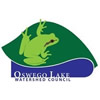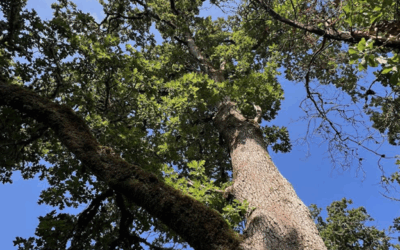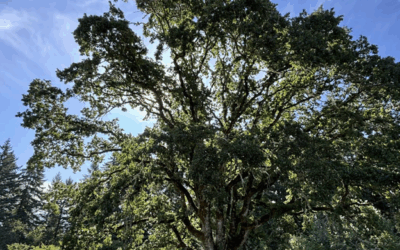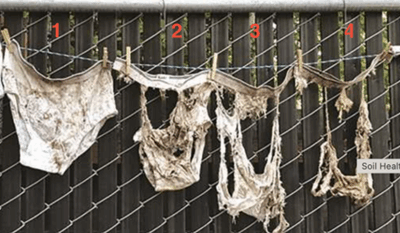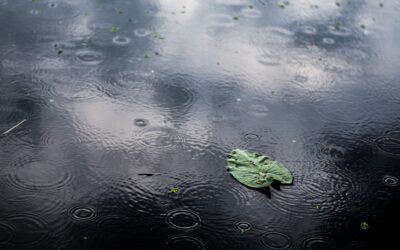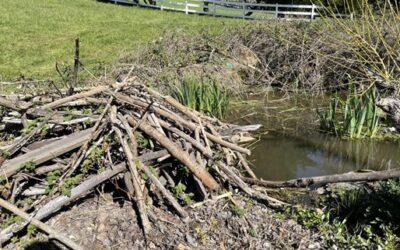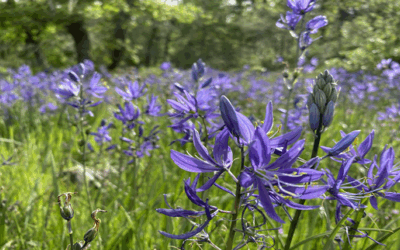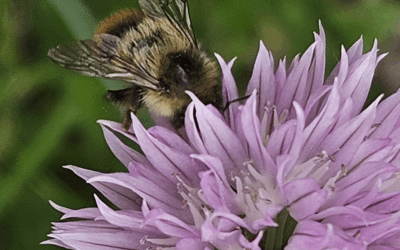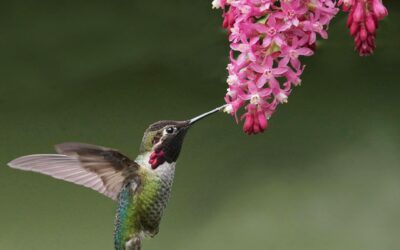The Niche of Urban Habitat
The urban world that humans create can have a range of disruptions to the surrounding natural systems. The removal of vegetation, construction of buildings, infrastructure, altered waterways, fragmented habitat, pollution, noise, and light. While we can find ways to mitigate the negative impacts and use more environmentally friendly approaches, the fact remains that our presence has an impact.
An Ode to Our Oaks
Prior to the conversion of land for farming and development, the Willamette Valley was a vast garden of oak prairies, stewarded by the indigenous nations, tended with cycles of fire and regrowth. The habitat held, and pockets still hold, a unique diversity of plant and animal species found nowhere else. Species coevolved in a landscape dominated by the keystone oaks. Without these trees a whole system of other species would fade away.
Community Science in Action: The 2025 Soil Your Undies Challenge
A playful project with a powerful message about the importance of soil health.
This spring, the Oswego Lake Watershed Council invited residents to take part in a hands-on experiment with a quirky name and a serious purpose: the Soil Your Undies Challenge.
Making the Most of the Rain: Our Journey to a Thriving Urban Habitat
Rain, rain, go away… is that how you feel during the long Pacific Northwest rainy season? If so, I encourage you to see that rain not as an inconvenience but as an opportunity. With the right approach, you can harness rainfall to support your landscape through water features, rain barrels, and rain gardens. By incorporating native and drought-tolerant plants, you’ll reduce your summer watering needs, improve soil health, and create a low-maintenance, ecologically beneficial space.
Beavers: Nature’s Engineers at Work
Beavers may be best known for their dams, but these remarkable animals are increasingly recognized as powerful partners in restoring ecosystems. Learn how beavers shape resilient landscapes—without machines, chemicals, or blueprints.
Seed Libraries: The Contents are Growing
Libraries, long known for sowing ideas, are now helping the community sow seeds and build a community around seed sharing. Lake Oswego now has at least two seed libraries, one run by the Lake Oswego Public Library and the other by Friends of Tryon Creek.
Pollinator Partners Assemble!
You might remember these striking photographs showing the impact of pollinators on our food choices – these photos show the produce section of a Whole Foods market with, and without, fresh produce made available because of pollinators:What is pollination? Pollination...
Thinking Beyond Lawn Towards Living Landscapes
Anna’s hummingbird feeding on Red Flowering CurrantPhoto credit: Mary Ann Whitney-HallArticle submitted by Peter Katon, Design Native Northwest LLCThe signs of early spring are exhilarating; the iridescent Anna’s Hummingbird darting in and out of the brilliant pink...
Wildfire Resilience
What is Lake Oswego Forest Resiliency? The idea of land resilience and community involvement requires a coupling of social and ecological resilience in rapidly changing landscapes affected by our warming climate. Land management is strongest when it adopts multiple...
Watershed Health
Characteristics of a Healthy Watershed A healthy watershed is vital to maintaining a balanced and thriving ecosystem. Key characteristics include: Dense Native Vegetation and Tree Canopy: Supports biodiversity and helps stabilize the environment. Stable Soils: Capable...
